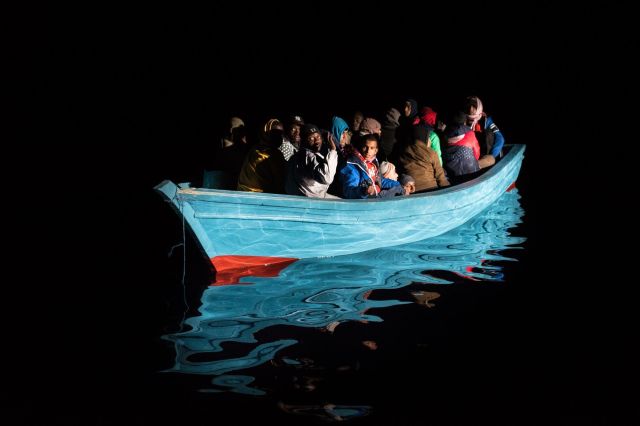Approximately 40 refugees get rescued from distress at sea in the mediterranean sea offshore the libyan coast on 04 Dec 2016 (Credit Image: Laurin Schmid/SOS MEDITERRANEE/DPA/PA Images)
After much coverage in the news a few years ago, the plight of the world’s refugees no longer gets the platform it deserves. Refugees Deeply senior editor Daniel Howden, below, and broadcaster and journalist Bidisha, in the box on the right, explore this under-reported issue.
Yet even the sympathetic coverage failed to individualise and humanise the people who made these journeys. Talk of the ‘refugee crisis’ faded from the main pages of the newspapers and after a number of TV documentaries about individual refugees’ perilous journeys or unsafe living conditions in makeshift camps or detention centres, the airwaves went quiet, as did any informed debate or nuanced discussion about the asylum system in Europe, or indeed about the multiple reasons so many millions of people are fleeing their homes.
I’m baffled by this sudden muting of such a complex and important issue and such a humanitarian crisis, particularly since all of the issues which refugees are fleeing are now prevalent globally, indeed are part of the ‘new normal’: terrorism, extremism, climate change, extreme poverty, authoritarianism, civil war and fragile states.
Crucial evidence is emerging on the ground in places like Jordan, where some things have been made to work, and Lebanon, where economics have lost out to politics. Meanwhile, the balance of conversation about refugees in Europe is stuck on whether or not they are coming this way. They are not. Media images of refugees are emotive but dishonest, showing them in camps or on boats, when in fact they are in cities like Jordan’s capital, Amman, trying to fend for themselves.
Countries like Jordan, Lebanon and Ethiopia, where a refugee jobs pact has been struck, will determine where and in what conditions refugees live. These ideas and experiments need the oxygen of attention and journalistic scrutiny to keep career politicians and multilateral lenders honest about what is working and what is not.
***
Introduction to this Under-reported series.
Summary guide to all under-reported articles in this series.










Join the discussion
Join like minded readers that support our journalism by becoming a paid subscriber
To join the discussion in the comments, become a paid subscriber.
Join like minded readers that support our journalism, read unlimited articles and enjoy other subscriber-only benefits.
Subscribe